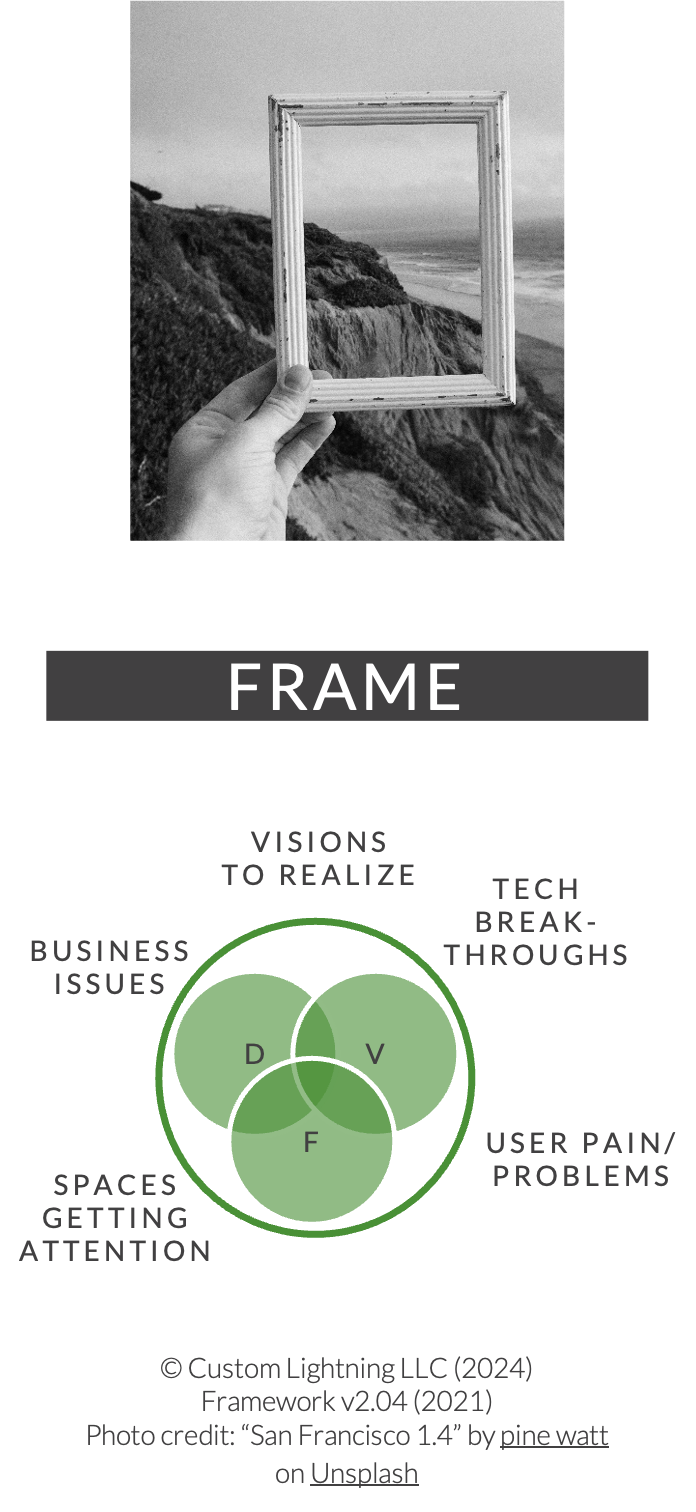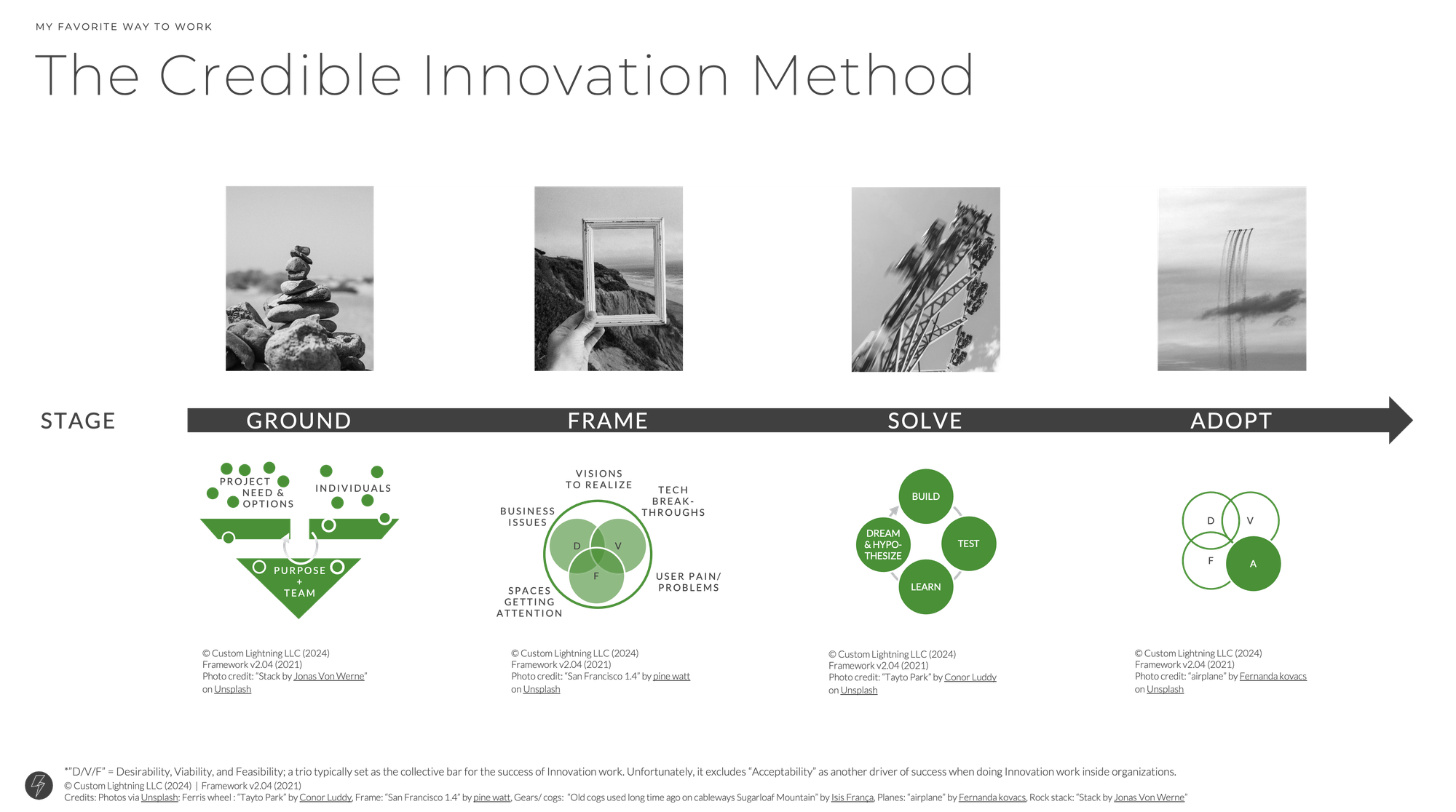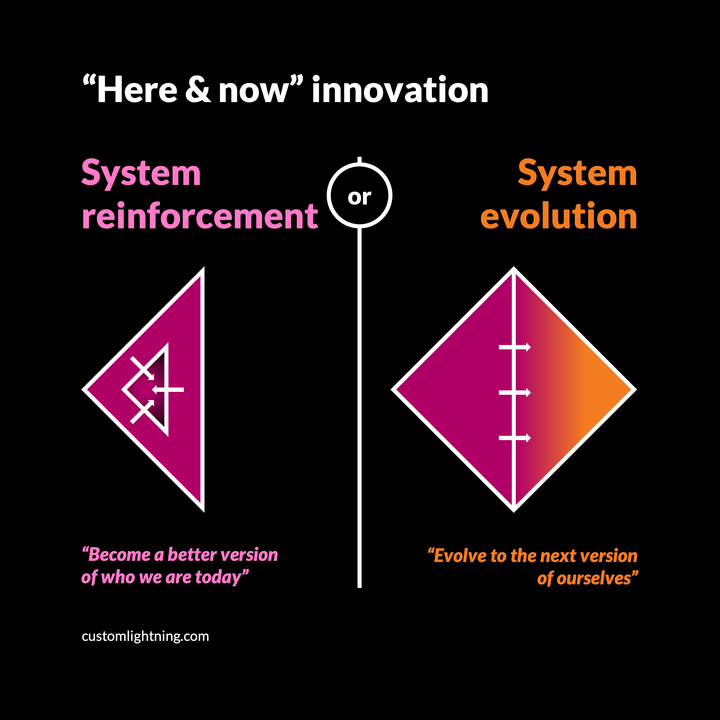[Blog] Terrible advice: "Always start with the user" ... or the market, or anything else
You need to accept projects in whatever shape they happen to be when you meet them. Don't put up your nose at unusual or messy starting points.
![[Blog] Terrible advice: "Always start with the user" ... or the market, or anything else](https://images.unsplash.com/photo-1578559025843-be9f0eb5617e?crop=entropy&cs=tinysrgb&fit=max&fm=jpg&ixid=M3wxMTc3M3wwfDF8c2VhcmNofDE0fHxyYWNlJTIwc3RhcnR8ZW58MHx8fHwxNzEyNTAyNDQzfDA&ixlib=rb-4.0.3&q=80&w=1200)
TL; DR
There is no such thing as "always" in innovation.
Projects shouldn't "always start with the user," "always start with the market," "always start with the team," or any other "always ...".
There simply are projects that matter and projects that don't.
No project is perfect or satisfies all criteria we'd love for them to have. As a result, cherry-picking for a perfect starting point means that you give up on other aspects that you can't afford to lose, things like meaning, chances of success, ... and credibility.
In other words: The more picky you are about project starting point, the more likely you are to fail.
A better way is simply to accept interesting, meaningful problems as you encounter them, to accept the shape in which are, and then simply to make it the first step of your work to move from where you actually are toward what you might consider a cleaner starting point. That point then is no longer your official start. Instead, it becomes your first in-progress milestone. It's at this "step 2" that it makes sense for us to have strong opinions.
By the way, this is the way we (hopefully) live most of our lives.
E.g., when we first have children, we don't get to mandate who they are born as (their "starting point"). Instead, we can only try to help them to grow up from the person they start being into a person who can find their way in the world.
Similarly, we don't choose our vacations from some "perfect" starting point. Instead, we have to accept the date range that is realistic, our general budget, our physical abilities, our family members needs, and more. Moreover, any one of these dimensions might be most important to any one vacation. Only then, as a "second step," do we plan vacations that work with the starting point that the universe imposed on us.
Innovation is no different.
Why is insistence on a given starting point so attractive?
The world is complicated. And innovation work is hard. Wouldn't it be nice then if we could make things simpler and easier?
You might talk about how you like "complicated" and "hard." But only to a point, I'd suggest. Yes, we learn more and have more meaningful challenges when we leave our Comfort Zone behind. But there is also a point where we exit the Learning Zone and reach the Panic Zone instead. At that point, "complicated" and "hard" become issues within us and inhibit our effectiveness, no matter how much we cover it up with bluster outward.
Enter, the temptation of simple, easy methods. If we "always use the same starting point" and "always use our branded innovation method/ toolkit," we stress less, get better at our craft, and can push further into tricky situations before we panic. It's a good thing, I'd acknowledge.
But we can overdo that good thing, like all good things.
The problem is when we carry it to an extreme, a religion. Usually starting in the same point simply focuses your efforts in areas where you have found a good effort-impact ratio. Always insisting on the same starting point causes trouble.
Let's talk about why that approach is so deeply flawed.
Startups don't all begin in the same place either
Startups may sound alike because many wax poetic about their "mission." But have a closer look at those missions, and difference start to emerge.
Chris Guest (whose writing is very much also worth your while) points out that entrepreneurs base their startups on at least three different starting points:
Two starting points fit a more hand-wavy definition of "always starting with the user:"
- Mission-driven startups truly start with the plight of "the user:" They consider all problems in-scope that cause users problems. For example, if you're out to save the oceans, like The Ocean Cleanup, then you deal with any problem that the oceans encounter and any method of fixing those issues. What's stable and always first is the user or affected party itself.
- Other startups treat the "problem" as their start: They may focus on a single user category to start. But they also tend to understand that such "extreme users" or "early adopters" merely represent one group of many whom they will serve eventually. "Design for one to serve all" is a common mantra for such startups. Interestingly, both human-centered and growth- (i.e., money-) centered startups fit this approach. Their motivation just differs. Some do it for the people, earning money along the way, while others look for money and accept user centricity as a path for getting there. All of these startups evolve the user they serve if needed but stay focused on the problem (or, if flipping their terminology) on the outcome.
But Guest also points out a third category of very common startups that does not start with the user by any definition, tight or loose:
- Solution-centric startups care most about their methods or products: University spinouts are an exceedingly common version of this type of startup. They often include world experts at some scientific or other discipline and they may already created a solution to some real-world or academic problem. It's at that point that they consider what user group might value the solution, and for what problem. (Yes, I'm simplifying a bit here. Just trying to illustrate a directional point. Real life is of course more messy.) Note that i's not that those startups don't care about problems or users. It's just that they often don't start there. That sequence may be forced on the startup by circumstance. For example, if you are a world expert at grass, then your focus will be on grass because that's what you know. You may not have access to people with other specialties at first. So you can't work on problems that have to do with other topics than grass unless you find collaborators for each of the other disciplines required.
All to say, even startups don't all begin work with "the user," "the problem," or any single starting point.
Corporate innovation even can't afford to insist on any one starting point
All the points already made about startups apply to corporate innovators too: Projects have different natural starting points.
But beyond that reality, we also face an even more urgent mandate if we do innovation work in existing org's:
We get paid to help our org extend its success into the future. If we reject work that might help our org do that just because it doesn't fit our ideal project shape, we
- don't earn our pay
- will miss out on meaningful work
- will be seen by those who offered the project as being useless to them
- will, over time, lose (or fail to gain) credibility.
It may sound harsh. But nobody else owes us admiration, just because we are awesome in our own minds. 🤷♂️ I'm trying to call out a mere reality rather than to be derisive in some way.
Of course, there is an edge case here: There are some projects that truly are out of scope to us: Hiring new talent, revamping our financials, completing audits, leaning out supply chains and more all are legitimate work that may extend the life of our org.
It's just that these scope edges are further out than we often set them.
As a simple rule of thumb, you might think of this as the kind of "need --> outcome" thinking that we advocate to our own clients, for example, via the jobs-to-be-done (JTBD) concept, and that bypasses excessive focus on solutions themselves.
Consider an illustrative example:
JTBD for our org: To evolve our business model
Outcome desired: To have our business model be able to succeed in a changed external environment
In this example, we might pursue multiple "solutions" for fulfilling the job-to-be-done. Maybe we'll design a new product or service in-house. Or maybe we'll acquire a startup. Or maybe we change our pricing or other business model component. As we preach ourselves, there are many possible solutions that might fulfill our org's job-to-be-done.
How might I use that?
The cheap answer is, of course: "Accept projects from wherever they come, independent of the starting point."
In other words: Focus on being useful. Help people solve problems. (Smart, unbiased) people treat those as credible who can help them, independent of toolkit or philosophy.
But I've found a more intense version of the sentiment to be even more helpful for assembling portfolios and choosing individual projects:
the more of a must-do it is to its sponsor
and the more set up for success it is for you as a result.
So don't just accept messy project starts. Seek them out!
I have actually taken it one step further and enshrined this agnostic attitude toward project starting points in my company's custom workflow.
The workflow's step 2 ("Frame") explicitly makes it part of the work to accept where the project is today and only then to work toward a cleaner spot from which we can launch toward the future:

As you can see, I treat whatever staring point at which I encounter a project as welcome. The starting point might range as widely as:
- Visions to realize
- Tech break-throughs
- User pain/ problems
- Spaces getting attention
- Business issues
All of them can lead to Desirability, Viability, and Feasibility and cleaner projects.
(Note to eagle-eyed readers: Acceptability/ Agreeability only appears later in my process. I haven't forgotten it here.)
Interested in my full workflow?
It's not core to the point at hand. But happy to share it, if helpful.
Here you go, both in embedded and downloadable form:

Further reading
Guest, C. (2024). Positioning For Traction - Category Design or Positioning? Which Is Best For You? https://tractiondesign.substack.com/p/positioning-for-traction
Credits
Post cover photo: "Girls writing on ground using a spray" by Adam Winger on Unsplash
Credible Innovation Workflow photos: Rock stack: “Stack" by Jonas Von Werne, Frame: “San Francisco 1.4” by pine watt, Ferris wheel: “Tayto Park” by Conor Luddy, Gears/ cogs: “Old cogs used long time ago on cableways Sugarloaf Mountain” by Isis França, Planes: “airplane” by Fernanda kovacs. All on Unsplash




